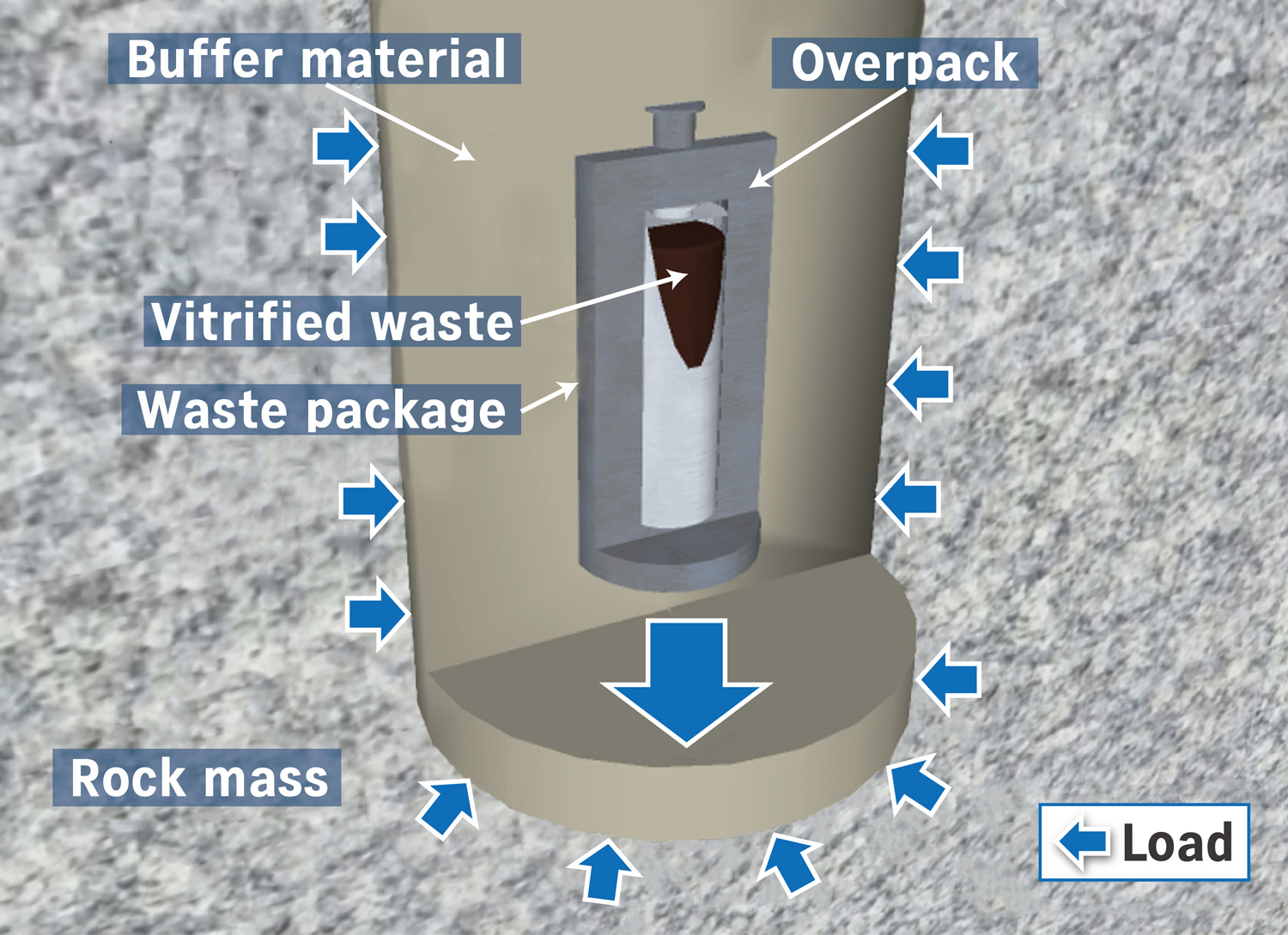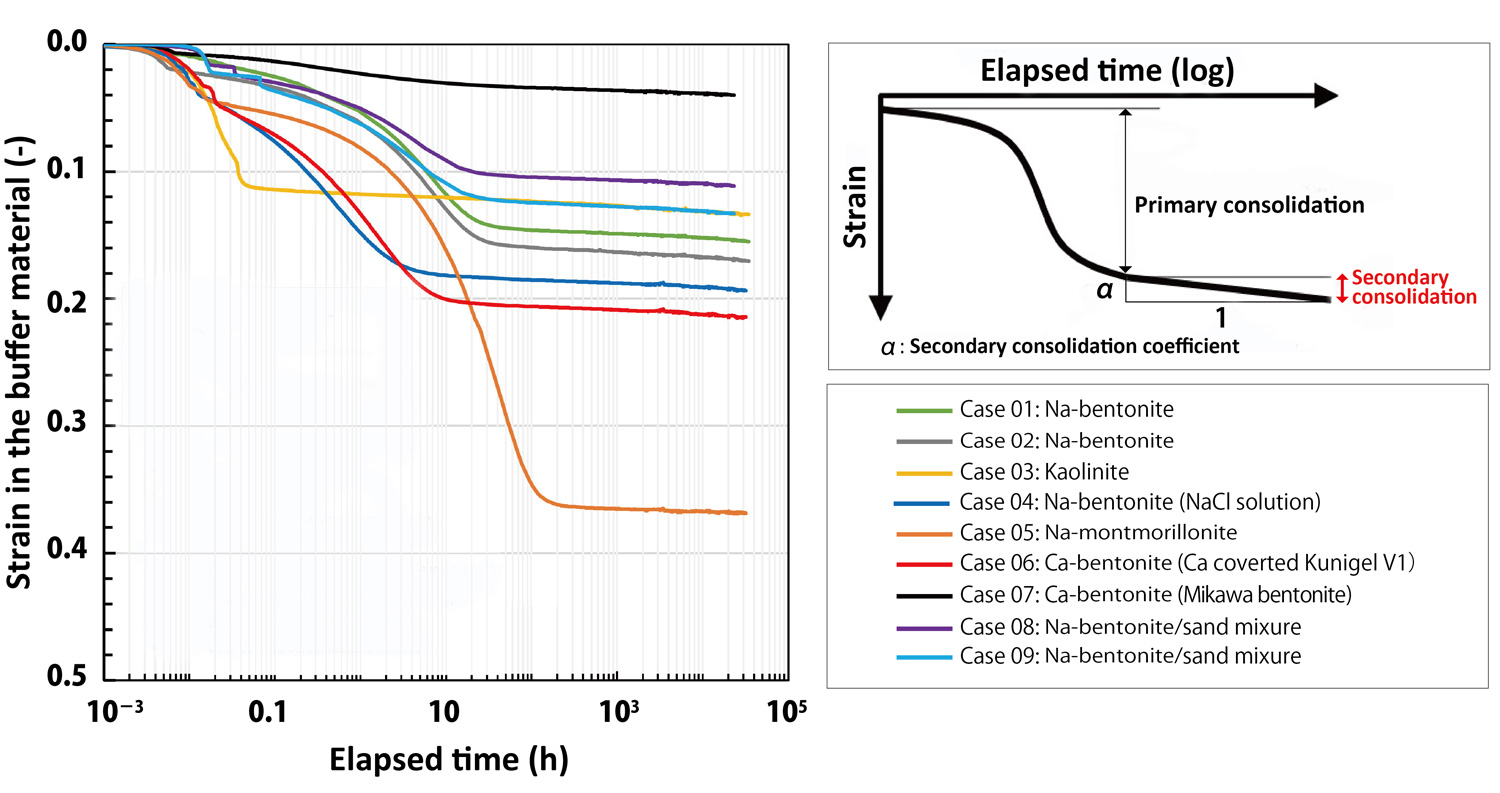Publication Date: July 18, 2025
Access counts:0
Understanding the Consolidation Behavior of Bentonite Over a 10-Year Period
-Data Acquisition on the Consolidation of the Buffer Material Through Long-Term Laboratory Tests-

Fig. 1 Various loads affecting the buffer material that makes up the engineered barrier systemy

Fig. 2 Relationship between elapsed time and strain in the buffer material from tests lasting up to 4 years
In the geological disposal of high-level radioactive waste, the buffer material (bentonite) is placed around the waste package, which is then disposed of within the rock mass (Fig. 1). The buffer material constitutes the engineered barrier system and is expected to have important functions for ensuring the safety of the repository after closure, such as low permeability and sorption of radionuclide materials. In addition, the buffer material is subjected to various forces (loads) due to the weight of the waste package and deformation of the rock mass (Fig. 1). This force will slowly consolidate the buffer material (increase strain), and as the waste package sinks, the thickness of the buffer material may decrease. Data acquisition and model development are therefore necessary to evaluate the long-term consolidation behavior of the buffer material.
Conventional test apparatus could only last for a few months. Consequently, a new consolidation test apparatus was constructed to enable continuous measurements without being affected by the influence of external factors such as power outages and seismic activity. To date, consolidation tests have continued for 2.7 to 4 years without any problems, and it has been confirmed that secondary consolidation continues as shown by the strain increases linearly (sinking) when plotted against the logarithm of elapsed time (Fig. 2).
The tests will continue running and provide continuously measured consolidation data in excess of 10 years.
If you have any comments or feedback about this page, please click the button to share your thoughts with us.
